 |
 |
 |
|
|
|||||||||||||||
|
|
 |
|
|
||||||||||||||||
 |
|
|
|||||||||||||||||
 |
|
||||||||||||||||||
 |
|
||||||||||||||||||
|
|
|
||||||||||||||||||
|
|
|
||||||||||||||||||
|
|
|
|
|||||||||||||||||
|
|
 |
 |
 |
 |
 |
 |
 |
 |
 |
 |
|
|
|||||||
 |
|
||||||||||||||||||
|
|
|
|
|
|
|
|
|
|
|
|
|
|
|
|
|
|
|
|
|
|
| ||||||||||
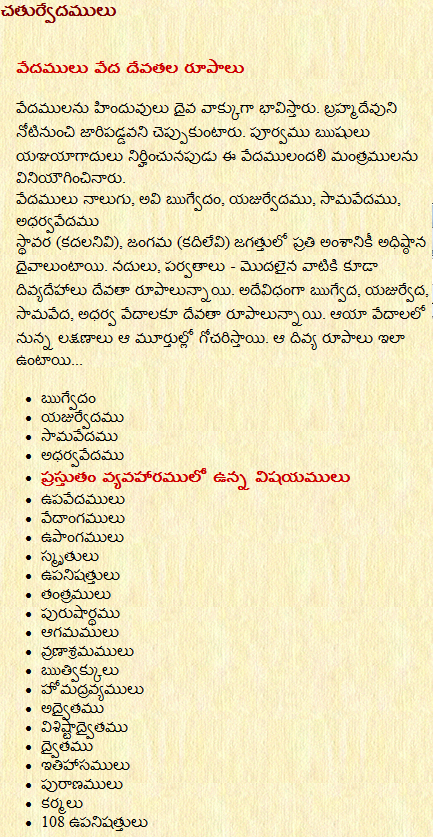
| ChaturvedamuluVedas and Gods of Vedas Vedas are considered by Hindus as the words of God. They are spilled from the very lips of Lord Brahma. In ancient times rishis, when performing yagnas and yagas, they used to recite mantras from the vedas. There are four vedas Rigveda, Yajurveda, Samaveda and Adharvanaveda. Stavara (immobile), jangama (mobile) every being in this world have a reigning Gods for them. Rivers, Mountains - and others have divine forms and Godly presence. Similarly Rigveda, Yajurveda, Samaveda and Adharvanaveda has superhuman forms. The nature of these vedas are portrayed in their respective forms. Their divine forms are as represented here.
| |||||||||
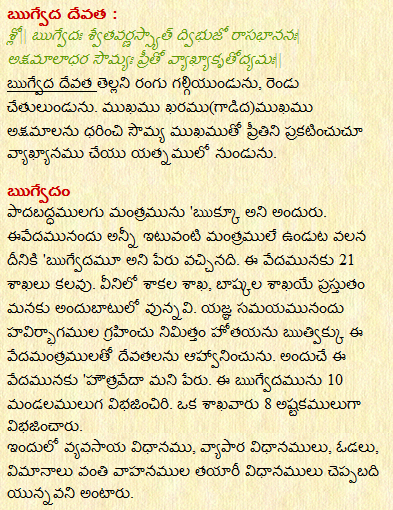
| Rigveda Deity The God of Rigveda is white in colour. Two hands, face of a donkey, wearing an 'Akshamala' and a pleasent serene expression expresseing pleasure. Rig Veda The structured verses are called 'Ruk'. Since the veda consists of similar verses it is called Rigveda. The veda is divided into 21 branches. Amoung these 'Saakala' branch and 'Baashkala' branch are presently available to us. During the time of Yagna,in order for the offering in the homam to be accepted the priest prisiding over the yagnam must recite verses from this veda. Hence this veda is also called 'Hotraveda'. This Rigveda is divided into 10books known as 'Mandalas', each branch branch is sub-divided into 8 astakas. It is said that this scripture not only contains information on agriculture and trade but also designs of how to build ships, bridges and other mechanisms. | |||||||||
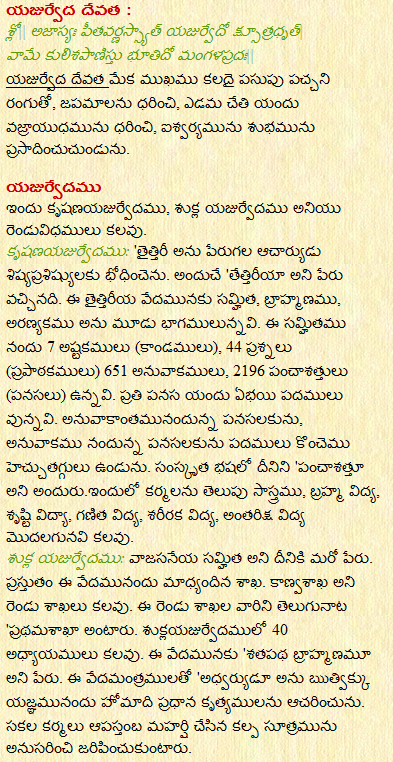
| Deity of Yajurveda: The Yajurveda Deity has a got the face of a goat and is yellow in colour, with praying beads on right hand and in the left hand he holds the 'Vajrayudham', the thunderbolt and blesses us with wealth and prosperity. Yajurvedam : There are two parts inYajurveda namely 'Krishnayana yajurveda' or 'Suklayanayajurveda'
| |||||||||

| ||||||||||

| ||||||||||
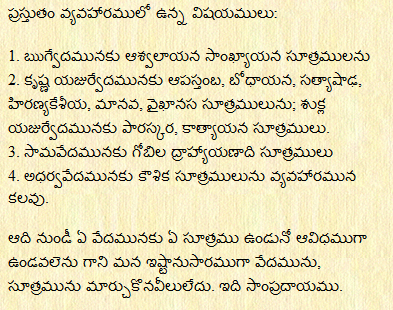
| Information that is presently in use. 1. Rigveda follows the 'Asvalaayana' numerological formula. 2. Krishna Yajurvedam adopts 'Aptastamba, 'boadhaayana', 'satyashaada', 'hiranyakaesiiya', 'maanava', 'vaikaanasa' formula; while SuklaYajurvedam follows 'paaraskara', 'kaatyaayana'. 3. Samavedam has 'Gobila Drahyanaa' formula. 4. Adharvavedam has 'Kousika' formula. Those formula which are used from the beginning is used all throughout the scripture. We should not change them for convinience. That is tradition. | |||||||||
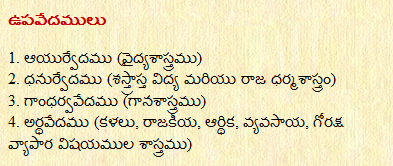
| Upavedamulu: 1. Ayurvedamu (Medical Science) 2. Dhanurvedamu (Science of Archery) 3. Gamdharva vedamu (Science of music) 4. Ardhavedam (Arts, Politics, Economy, Agriculture, Protection of Cattle) | |||||||||
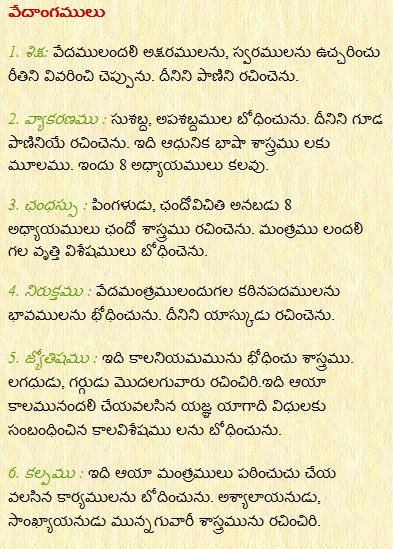
| Vedamgamulu 1. Siksha : The letters in a vedam, and the way the syllables are uttered. Written by Paani. 2. Vyakaranam : 'Susabdamu' (good sounds), 'Apasabdamu' are taught here. This is also written by Paani. This is the basis for today's language. It contains 8 chapters. 3. Chandassu : Pingaludu, wrote 'Chandoavichita' which today is called Chandassu. It tells about the activity performed in a mantra 4. Niruktamu: It explains the meaning of the difficult words in the Vedamantras. Written by Yaska. 5. Jyotishyamu : This explains the laws of time. Written by Lagadhara, Garuda and a few others. This tells us of the yagnas and yagas that are to be performed in the prescribed moments. 6. Kalpamu : This explains the duties to be performed while reciting the different mantras. Written by Asyaalayana, Samkyaayana and a few others. | |||||||||
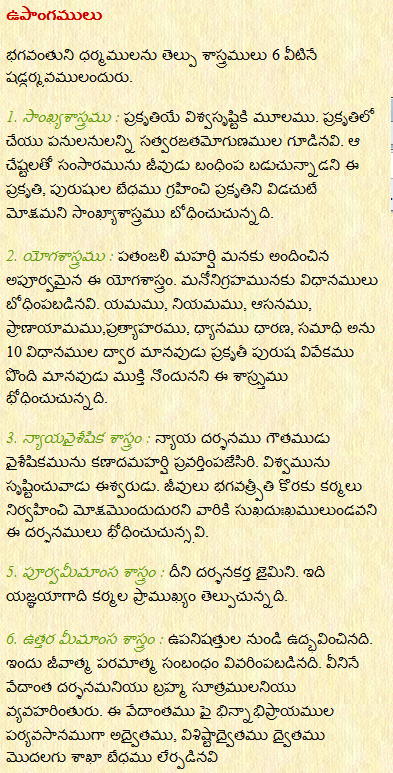
| Upangamulu The laws of God are told in 6 sciences. hence they are called 'Shadrmavamulu'. 1. Samkyasaasramu (Numerology): Nature is the foundation of creation. Nature works in the laws of Pi. The human life is bound around mundane things when he rises above these he attains salvation. 2. Yogasastram : The greatest gift offered to us by | |||||||||
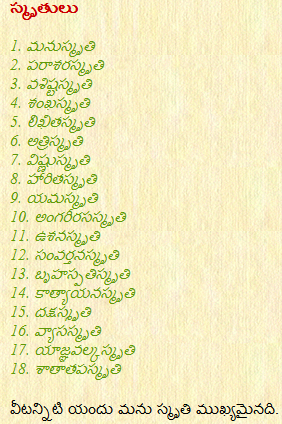
| ||||||||||

| ||||||||||

| ||||||||||

| ||||||||||
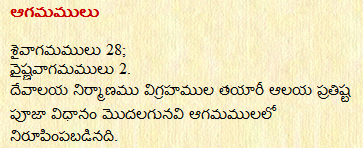
| ||||||||||
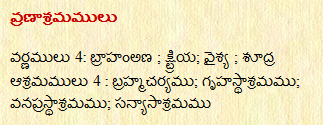
| ||||||||||
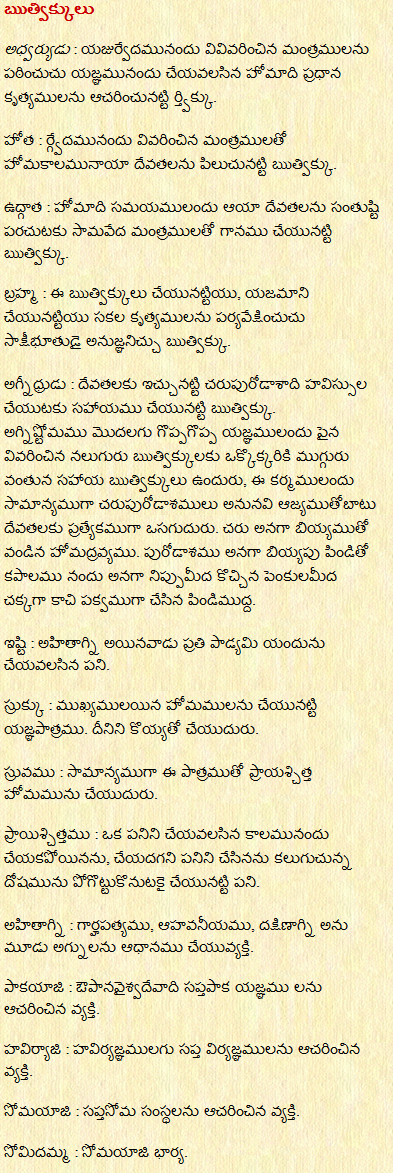
| ||||||||||
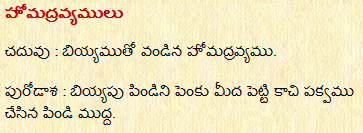
| ||||||||||
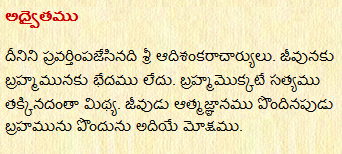
| ||||||||||
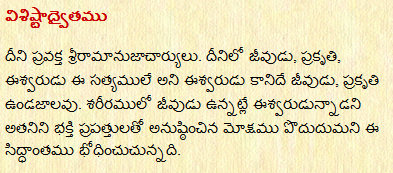
| ||||||||||
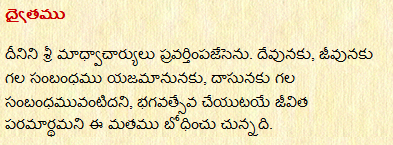
| ||||||||||

| ||||||||||
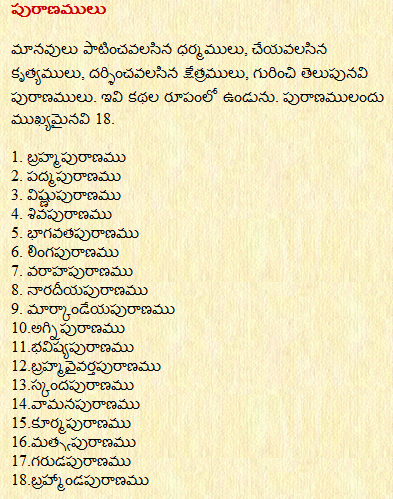
| ||||||||||
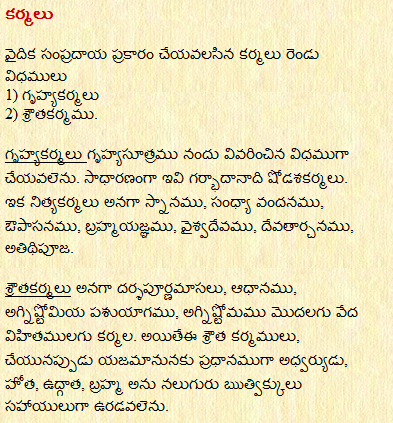
| ||||||||||

| ||||||||||
| *** | *** | |||||||||

|
||||||||||